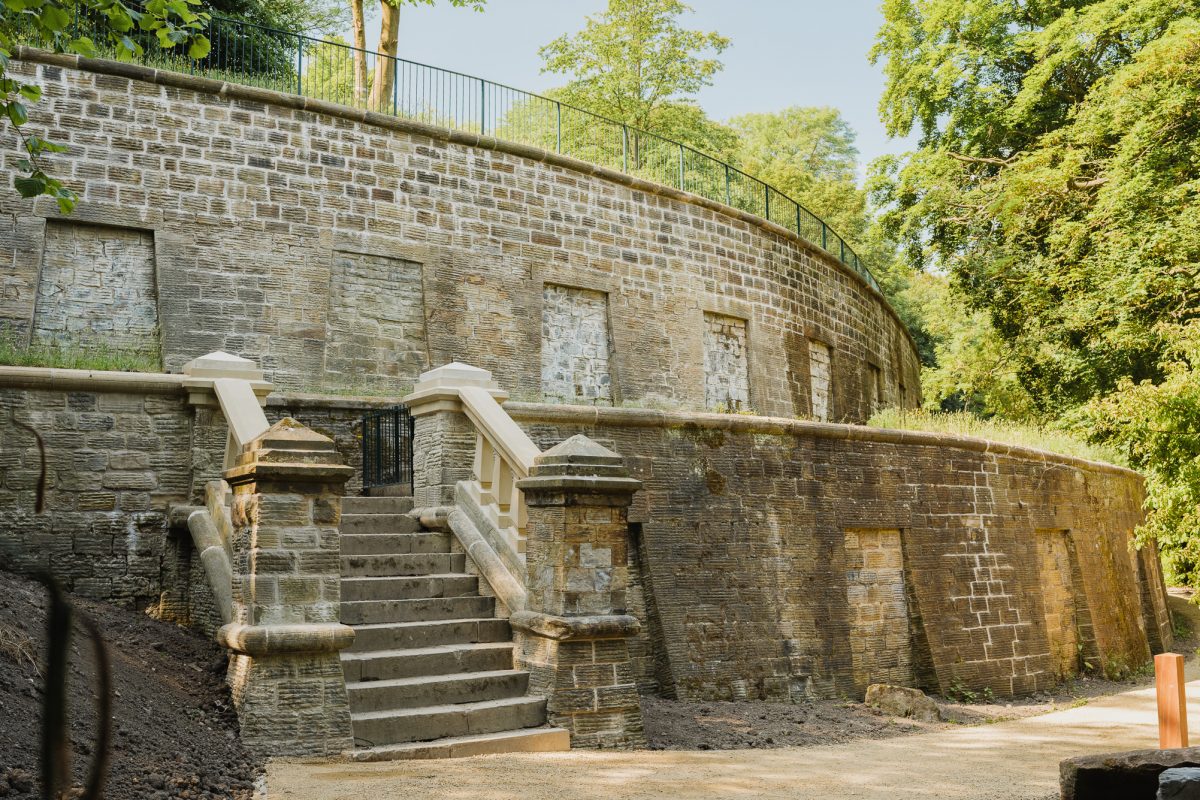During the Industrial Revolution, the population of Sheffield underwent extraordinary growth, as families moved to find employment in the town’s “manufactories.” It was a period of social unrest and reform. Religious reformers broke away from the established Church of England to join movements such as the Methodists. These people were known as Dissenters or Nonconformists.
During the Industrial Revolution, the population of Sheffield underwent extraordinary growth as families moved to find employment in the town’s “manufactories”. There was an urgent need for new burial space. It was also a period of social unrest and reform. Religious reformers broke away from the established Church of England to join movements such as the Methodists. These people were known as Dissenters or Nonconformists.
1834- 1836 – A new cemetery
Sheffield General Cemetery opened in 1836, operated by a private Cemetery Company, as an unconsecrated burial ground where Nonconformists could be buried according to their own custom. The Cemetery’s catacombs made effective use of the steep hillside to provide 48 stone-faced burial chambers, each containing several burial plots. Curving paths and newly planted trees provided a succession of views through the Cemetery and out across the Porter Valley, with a Nonconformist Chapel in the centre of the hillside. In 1836, the cost of a single catacomb was £56 – the equivalent of almost £10,000 today.
1845-1852 – Expansion and growth
Sheffield’s rapid growth and a need for more burial places for Anglicans, led to an expansion of the Cemetery into adjacent fields creating a new consecrated area with a ‘New Chapel’ up on the newly established Cemetery Road. To connect the two sites, the main carriageway had to be altered and raised considerably until it crossed and buried the old ‘Dissenters Wall’. The catacombs below were still empty or had been used for public burials which were funded at public expense as wealthier families preferred to commission their own freestanding memorials which now filled the Cemetery.
1937 – The new vaults
In 1937, the Cemetery Company proposed creating new burial opportunities in a third tier of catacombs. This involved casting 140 burial boxes using a new building material, in situ reinforced concrete, topped by a pre-cast concrete balustrade. These concrete boxes replaced the brick vaulted roofs of the upper catacombs and rested their weight on the facing wall of the 1836 structure. The ‘New Vaults’ loomed above the valley below, visually separating the upper and lower parts of the Cemetery.
Twentieth century decline and conservation
In 1937, people had not realised that placing mild steel reinforcement bars inside concrete too close to the face of the concrete could rust and lead to failure of the structure. By the beginning of this century, the stonework below showed cracks which indicated a possible collapse. Between 2021 and 2023, funding awarded by The National Lottery’s Parks for People Programme allowed a programme of repair and conservation works to take place. The decision to reduce the 1937 structure down to the 1852 ground level was one of the most significant and complex parts of the project. The work not only took the load off the original walls, it also helped to re-establish the original design and the visual connection between the upper and lower areas of the Cemetery. A single concrete section has been kept to remember this part of the catacombs’ story.




